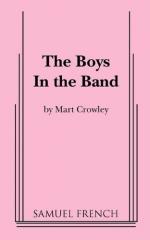|
This section contains 893 words (approx. 3 pages at 400 words per page) |

|
The Boys in the Band was certainly not the first popular drama to have gay characters. For the most part, however, homosexuality was disguised in plays and film. One of the most powerful examples of this, which critics often point to as an immediate predecessor of Crowley's play, is Robert Anderson's 1953 drama Tea and Sympathy, about an effeminate boy who is mocked and threatened at a preparatory school. (He is given the nickname "Sister-Boy," and the headmaster's wife makes it her mission to "cure" him sexually.) What makes The Boys in the Band such a groundbreaking work is that it was the first mainstream piece to show gay men in their own environment, interacting with each other, acknowledging camp posturing, in-jokes, and psychological torment without mocking or overemphasizing. Critics took note of the fact that the characters are gay, and they pointed out the ways in...
|
This section contains 893 words (approx. 3 pages at 400 words per page) |

|




